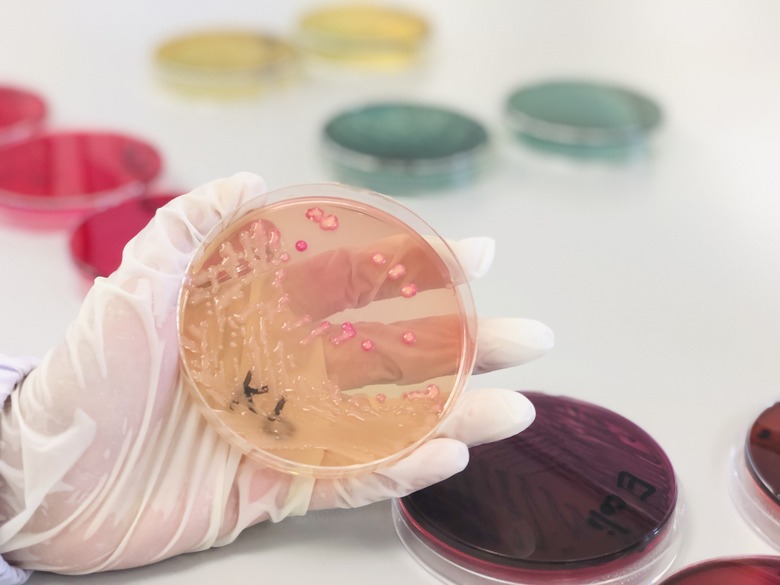How Enterococcus Faecalis Changes The Mannitol Salt Plate
Definition of enterococcus
Definition of enterococcus
Enterococcus faecalis is a type of lactic acid bacteria, which means that it produces lactic acid as a byproduct of metabolism. It is a gram positive bacteria, which means that it has a rigid outer cell wall (gram positive means that it is stained by gram staining, which only happens if the bacteria has this rigid wall). It is normally found in the digestive tracts of humans and is often present in "probiotic" foods. While not normally infectious, it can infect humans if there is damage to the digestive tract. These types of infections can be very dangerous because many strains of enterococcus faecalis are resistant to antibiotics.
Definition of a mannitol salt plate
Definition of a mannitol salt plate
A mannitol salt plate is a type of bacterial culture plate that uses mannitol salt agar. This high salt concentration prevents the growth of gram negative bacteria (those without the outer wall) as it causes them to become dehydrated and die. As a result, this type of agar (which is 7.5 percent salt) will only grow staphylococcus bacteria and a few different kinds of enterococcus bacteria that can survive the conditions, including enterococcus faecalis. Mannitol is added to provide nutrients for the metabolism of the bacteria.
How enterococcus faecalius changes the mannitol salt plate
How enterococcus faecalius changes the mannitol salt plate
Enterococcus faecalis is one of the few types of bacteria that can grow in a very salty environment, which then helps prevent it from being crowded out by other bacteria. Because enterococcus faecalis produces lactic acid as part of its metabolism, when it uses the mannitol for energy (mannitol is a type of sugar), acid is secreted. This acid secretion changes the pH of the surrounding agar, which causes it to change from a pink color to yellow. As a result, enterococcus faecalis will cause spots of yellow to appear on a mannitol salt plate.
Cite This Article
MLA
Cloe, Adam. "How Enterococcus Faecalis Changes The Mannitol Salt Plate" sciencing.com, https://www.sciencing.com/faecalis-changes-mannitol-salt-plate-4925744/. 23 April 2009.
APA
Cloe, Adam. (2009, April 23). How Enterococcus Faecalis Changes The Mannitol Salt Plate. sciencing.com. Retrieved from https://www.sciencing.com/faecalis-changes-mannitol-salt-plate-4925744/
Chicago
Cloe, Adam. How Enterococcus Faecalis Changes The Mannitol Salt Plate last modified March 24, 2022. https://www.sciencing.com/faecalis-changes-mannitol-salt-plate-4925744/
